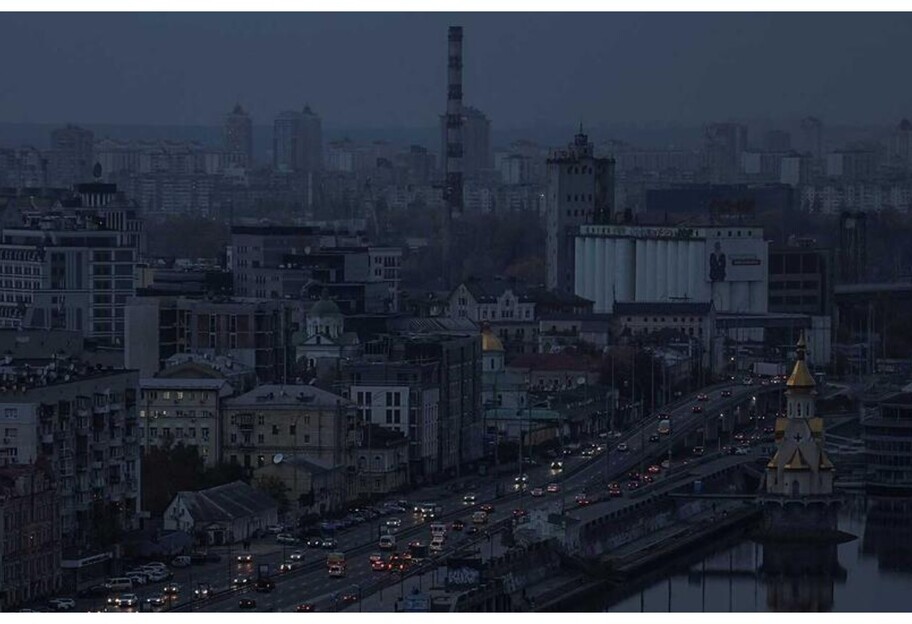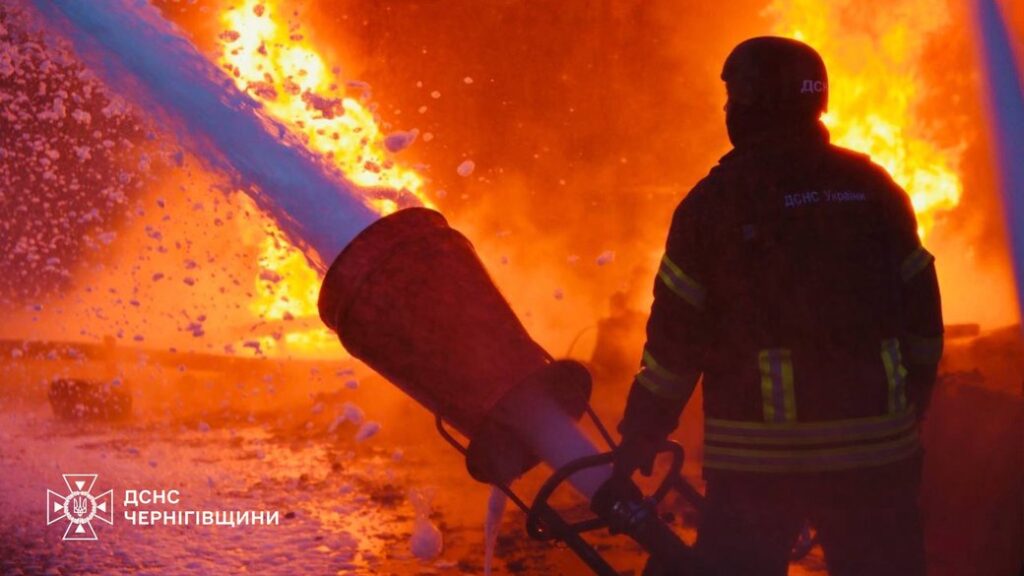When Kyiv may be left without electricity: experts warn of system vulnerabilities
6 October 14:25
Ukraine’s energy system is on the verge of stability: despite electricity imports and backup power lines, some regions remain vulnerable to attacks. Experts warn that even Kyiv, which has a strong infrastructure and reserves, could be left without power if neighboring regions or strategic hubs are hit.
Massive drones, attacks on transformer substations and insufficiently coordinated air defense pose serious risks for the winter season, aviation experts warn. When and under what conditions could Kyiv be left without electricity? What are the possible new scenarios of Russian attacks and whether American batteries will become a shield for the Ukrainian energy sector this winter – [Kommersant] has analyzed.

Ukraine’s energy system is currently operating relatively stably, but its balance is on a fine line between deficit and imports. According to energy expert Stanislav Ignatiev, as of the morning of October 6, the system is showing “a shortage of electricity, which is covered by imports, primarily from Slovakia, Poland and Hungary.”
At the same time, according to the expert, despite the overall balance, some regions, “both frontline and deep rear,” do not have a stable electricity supply.
The capital is under conditional threat
Despite the fact that Kyiv remains the energy center with the most powerful protective infrastructure, the risks of a blackout are quite real. Stanislav Ignatiev explains that the situation in the capital directly depends on the state of the networks in neighboring regions:
“If, for example, there is a hit in the regions neighboring Kyiv, the capital and Kyiv region could hypothetically be left without a stable power supply for some time,” Stanislav Ignatiev
The key word here is “hypothetically,” but power engineers remember well the events of last winter, when even a short-term damage to one substation in the region caused cascading blackouts.
Kyiv’s power grid has several redundant lines, but attacks on nodes in Chernihiv, Zhytomyr, or Poltava regions could again “break” these chains. Such scenarios have already been partially practiced by Russian forces.

A new stage of energy terror: Russia strikes at the “nerves” of the system
Konstantin Krivolap, an aviation expert, says that in the fall there were several strikes that were not aimed at destroying the generation as such, but rather at disabling distribution lines and transformer substations.
“We can see that there was a very powerful attack on Nizhyn… they simply destroyed the CHP plant, and that’s why Chernihiv is now without electricity. And the attack on Slavutych looks ridiculous, because the Chornobyl NPP is powered through this particular node. There are two transformers there, and there is virtually no backup. This is dangerous both technically and strategically,” says Kryvolap
Such a concentration of power lines in several nodal points poses a threat of a “domino effect,” when damage to one link disables several areas at the same time.
That is why even Kyiv, which has several power circuits, remains vulnerable in the event of a large-scale attack on regional substations.
Air defense problems and “airplanes that no one can hear”
In addition to the technical weaknesses of the energy system, Kryvolap raised the issue of air defense, which, in his opinion, directly affects energy security.
He recalls that back in September and early October, “shaheds” and reconnaissance drones were regularly spotted flying over Kyiv region, which were actually operating without resistance.
“First of all, it’s a reconnaissance drone flying, no one is doing anything about it… If it was not seen, what are the border guards doing? And in general, what is the air defense system doing?” Kryvolap asks a rhetorical question
According to him, the attack on September 2, when about 30-40 drones flew over Kyiv, showed a weak response, and a month later, despite loud promises to create a “multi-layered defense,” no systemic changes are visible.
Kryvolap believes that the key gap is not the lack of equipment, but the lack of coordination between units, as well as the lack of attention to light aircraft, which could become an additional tool in the fight against drones:
“Light aircraft do not require anything from the state. People say: you don’t have to pay money, give us the ability to shoot down, give us weapons, radars, guidance, and the distribution of zones. That’s what air defense should do,” Kryvolap said

The expert cites examples of initiatives from local pilots who are ready to patrol the air over the Kyiv Reservoir and even shoot down “shahids” on their own, but “the state does not use this potential.” This, in his opinion, indicates a deeper problem: the slow adaptation of defense structures to the realities of modern air warfare. And until air defense is integrated at the community-to-command level, the protection of energy facilities will remain fragmented.
The enemy’s strategic goal is not destruction, but depletion
Experts agree on one thing: Russian attacks on the energy sector have not only a technical but also a psychological effect. The goal is not only to “de-energize” cities, but to make Ukrainians doubt the government’s ability to protect critical infrastructure.
“The Russians say they will destroy the entire energy structure within a 50-kilometer zone. And they are starting to do it. And the rest of the population should worry, panic, and put pressure on the authorities. This is their goal,” says Kryvolap.
That is why, according to experts, information work and psychological readiness of the population are no less important than technical protection.
New strategy to protect Ukraine’s energy sector in winter
Against the backdrop of expected Russian winter attacks on energy infrastructure, Ukraine has developed a new energy resilience strategy. According to The Wall Street Journal, the country’s energy companies are relying on a large-scale network of battery systems – “energy batteries” – that can maintain power supply even in the event of damage to the main power units.
Last winter, the energy sector withstood a very difficult season, but this year the risks have increased significantly. The WSJ reminds that Russia has increased production of attack drones that can massively suppress Ukrainian air defense.
“This winter could be even more dangerous for Ukraine,” says The Wall Street Journal

According to the WSJ, Ukraine is deploying a network of American-made battery parks – strategic energy storage facilities that can compensate for temporary loss of generation or damage to substations.
These facilities, with a total capacity of 200 megawatts, can provide electricity to approximately 600,000 households for two hours – the equivalent of an entire city the size of Washington, DC.
“During a bombing, the units give engineers time to restore power and prevent widespread blackouts,” the WSJ article says.
To avoid a repeat of last year’s massive blackouts, the locations of the batteries are kept strictly secret. It is only known that six facilities have already been connected to the grid – they are located in Kyiv and Dnipro regions.
Their function is to instantly pick up the load if, for example, a thermal power plant fails. This flexibility helps to avoid rolling blackouts and stabilize the grid.
Thus, despite the stability at the national level, Ukraine’s power system remains vulnerable: nodal substations, limited redundancy, and poor coordination of the defense system create blackout risks even for the capital. A new strategy with large-scale battery parks and the development of renewable energy sources is designed to reduce these risks, but experts emphasize that not only technical protection but also public preparedness and effective defense coordination remain key.









